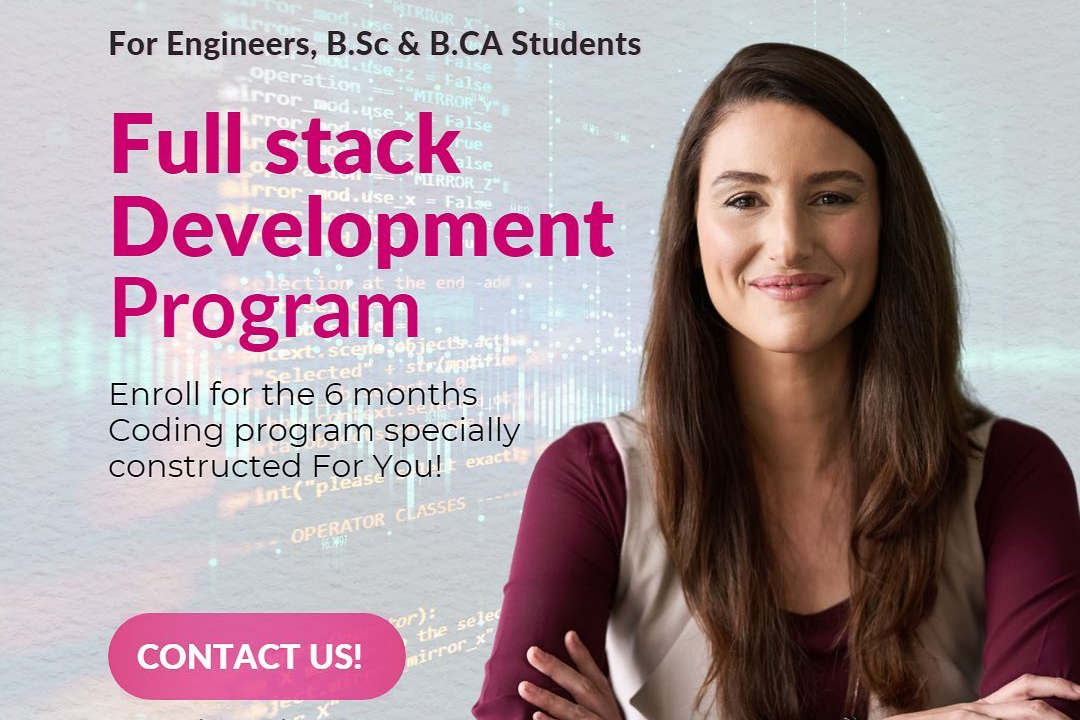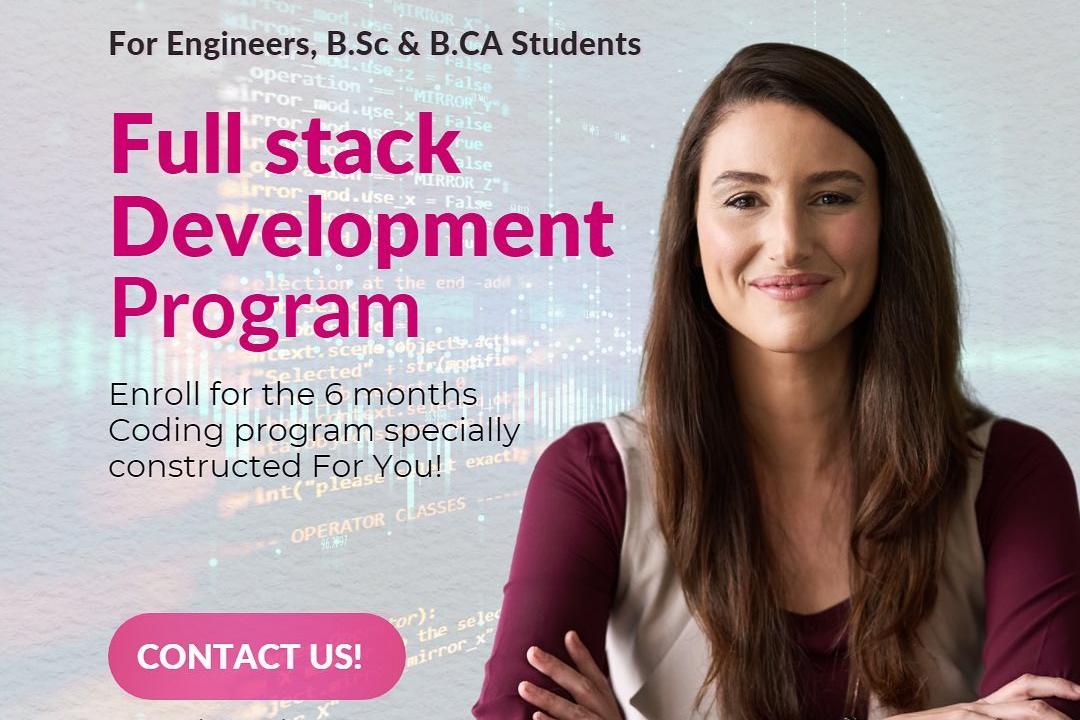Array Pattern Logical Interview Questions PHP
Logical Interview Questions in PHP: Mastering Array Patterns
Array Pattern Logical Interview Questions PHP
Array pattern logical interview questions in PHP are essential for assessing a candidate's understanding of data structures and algorithms, particularly how to manipulate and traverse arrays effectively. These questions often require applicants to demonstrate their ability to solve problems through logical reasoning and coding skills, showcasing their familiarity with PHP functions and syntax. Mastering these concepts not only prepares candidates for technical interviews but also equips them with the practical skills needed to handle real-time data manipulation tasks in various projects, making them valuable assets in the software development field. By practicing these questions, individuals can enhance their problem-solving abilities and improve their coding efficiency.
To Download Our Brochure: https://www.justacademy.co/download-brochure-for-free
Message us for more information: +91 9987184296
Here are 15 array pattern logical interview questions in PHP along with their answers:
1 - Finding the Maximum Element: Write a function to return the maximum element in an array. You can use the `max()` function or iterate through the array, comparing each element.
2) Reverse an Array: Implement a function that reverses an array without using built in functions. You can use a loop to swap elements from the start and end towards the center.
3) Check for Duplicates: Create a function to check if there are any duplicate values in an array. Use the `array_unique()` function and compare the count of the original array with the unique one.
4) Count Occurrences of Elements: Write a function that counts occurrences of each element in an array. Utilize the `array_count_values()` function to achieve this efficiently.
5) Finding Pairs with Sum: Given an array, write a function to find pairs of elements that sum up to a specific target. You can use a nested loop to check each combination at a basic level or a hash map for improved efficiency.
6) Removing Duplicates: Create a function that removes duplicates from an array. You can utilize `array_unique()` or create a new array by checking if an element already exists.
7) Merge Two Arrays: Implement a function to merge two arrays without duplicates. Use `array_merge()` followed by `array_unique()` to achieve this.
8) Sorting an Array: Write a function that sorts an array in ascending order. You can use `sort()` for numeric arrays and `asort()` for associative arrays.
9) Finding the Intersection of Two Arrays: Create a function to find common elements between two arrays using `array_intersect()`.
10) Finding the Union of Two Arrays: Write a function that returns the union of two arrays, using `array_merge()` followed by `array_unique()`.
11 - Finding the Third Largest Element: Implement a function to find the third largest element in an array. Sort the array and access the third last element.
12) Flattening a Multi dimensional Array: Create a function to flatten an array of arrays. You can use recursion or `array_map()` combined with `call_user_func_array()`.
13) Finding Missing Elements in a Range: Given a range, write a function to find missing elements in an array. You can compare the expected full range with the actual array using `array_diff()`.
14) Rotating an Array: Implement a method to rotate an array to the right by a given number of steps. Use array slicing with `array_slice()` combined with `array_merge()`.
15) Finding the Largest Sum of Consecutive Elements: Create a function to find the largest sum of consecutive elements in an array. You can iterate through the array and maintain a running sum while tracking the maximum found.
Each of these questions tests fundamental knowledge of PHP arrays, effective problem solving ability, and understanding of algorithms, making them invaluable for assessing programming skills during an interview process.
Here are some additional array pattern logical interview questions in PHP, along with their explanations and potential solutions:
16) Find the Second Smallest Element: Write a function to find the second smallest element in an array. A simple approach is to sort the array and return the second element while ensuring distinct values.
17) Rotate Array Left: Implement a function that rotates an array to the left by a specified number of positions. This can be achieved by array slicing and merging.
18) Finding Distinct Elements: Create a function that returns all distinct elements in an array. Use `array_unique()` or a loop to build a new array capturing elements that haven’t been added yet.
19) Array Repeated Elements: Write a function to find repeated elements in an array. You may combine `array_count_values()` with a filter to get values that appear more than once.
20) Combine Two Arrays with a Common Key: Implement a function that combines two associative arrays by a common key. This can be done using a loop to match keys and merge values.
21 - Find All Triplets with Zero Sum: Create a function that finds all unique triplets in an array that sum to zero. A common approach involves sorting the array and then using a two pointer technique.
22) Group Anagrams from an Array: Write a function to group anagrams from an array of strings. This is typically done by sorting each word and using a hash map to collect words that share the same sorted key.
23) Finding the Longest Consecutive Sequence: Write a function to find the longest consecutive sequence of integers in an unsorted array. Use a hash set for tracking the numbers and then iterate to find the length of consecutive sequences.
24) Count Unique Triplets in Array: Create a function that counts unique triplets in a sorted array that sum up to a specified target.
25) Find the Kth Largest Element in an Array: Implement a function to find the Kth largest element in an unsorted array. Use sorting or a min heap approach for improved efficiency.
26) Construct a Frequency Array: Write a function that constructs and returns a frequency array from the input array where each index represents a unique value from the original array.
27) Check if Array is Sorted: Create a function to check if an array is sorted in ascending order without using built in sorting functions. A simple iteration comparing adjacent elements will suffice.
28) Counting Sort Implementation: Implement counting sort for an array of integers where the range is known. This works efficiently for small ranges.
29) Closest Pair in an Array: Write a function to find the pair of numbers in an array whose difference is minimized. This can be done efficiently by sorting the array first.
30) Finding Median of an Array: Create a function to find the median of an array. Sort the array and then determine the middle value(s).
31 - Sum of Two Indices Equals Target: Implement a function that finds indices of two numbers in an array that add up to a specific target using a hash map for efficient lookup.
32) Find Maximum Product of Three Numbers: Write a function that finds the maximum product of any three numbers in an array, taking into account negative numbers.
33) Shifting Zeros to End: Create a function that moves all zeros in the array to the end while maintaining the order of non zero elements.
34) Pair Sum Exists: Write a function to determine if there exists a pair of integers in an array whose sum equals a specific target. This can efficiently be solved using a hash set.
35) Split Array into Equal Sums: Develop a function that checks if an array can be split into two subsets with equal sums using backtracking or dynamic programming.
These additional questions further challenge the understanding and manipulation of arrays in PHP, enabling candidates to demonstrate their problem solving abilities in a programming context. Each question presents an opportunity to discuss various algorithms and best practices, critical for real world programming scenarios.
Course Overview
The “Array Pattern Logical Interview Questions in PHP” course is designed to equip learners with the essential skills needed to tackle various interview questions focused on array manipulation and problem-solving in PHP. Through a series of practical exercises and real-time projects, participants will explore key concepts such as array sorting, searching, and transformation techniques. The course covers a diverse range of topics, including finding unique elements, grouping data, and implementing advanced algorithms, enabling learners to enhance their coding proficiency and prepare effectively for technical interviews. By the end of this course, participants will have a solid understanding of array patterns and the confidence to approach complex coding challenges with proficiency.
Course Description
The “Array Pattern Logical Interview Questions in PHP” course is structured to prepare learners for technical interviews by diving deep into common array manipulation problems and logical challenges encountered in PHP. Through hands-on projects and practical exercises, participants will gain mastery in topics such as sorting, searching, and transforming arrays, along with techniques for identifying patterns and optimizing solutions. The course emphasizes critical thinking and problem-solving skills, providing learners with insights into efficient coding practices. By the end of this course, participants will be well-equipped to tackle array-related questions confidently and effectively, enhancing their overall programming skills and increasing their readiness for career opportunities in software development.
Key Features
1 - Comprehensive Tool Coverage: Provides hands-on training with a range of industry-standard testing tools, including Selenium, JIRA, LoadRunner, and TestRail.
2) Practical Exercises: Features real-world exercises and case studies to apply tools in various testing scenarios.
3) Interactive Learning: Includes interactive sessions with industry experts for personalized feedback and guidance.
4) Detailed Tutorials: Offers extensive tutorials and documentation on tool functionalities and best practices.
5) Advanced Techniques: Covers both fundamental and advanced techniques for using testing tools effectively.
6) Data Visualization: Integrates tools for visualizing test metrics and results, enhancing data interpretation and decision-making.
7) Tool Integration: Teaches how to integrate testing tools into the software development lifecycle for streamlined workflows.
8) Project-Based Learning: Focuses on project-based learning to build practical skills and create a portfolio of completed tasks.
9) Career Support: Provides resources and support for applying learned skills to real-world job scenarios, including resume building and interview preparation.
10) Up-to-Date Content: Ensures that course materials reflect the latest industry standards and tool updates.
Benefits of taking our course
Functional Tools
1 - Integrated Development Environment (IDE)
The course leverages popular Integrated Development Environments like Visual Studio Code and PHPStorm, providing an environment where students can write, debug, and test their PHP code efficiently. These tools offer features like syntax highlighting, code completion, and debugging tools that streamline the coding process. Familiarity with an IDE is crucial as it enhances productivity, allowing students to focus on solving array pattern problems without getting bogged down by coding errors.
2) Version Control Systems (Git)
Students will learn to use Git for version control, which is essential for managing code changes and collaborating with other developers. By using Git, students can track their progress, revert to previous code versions, and understand industry standards for code management. This skill is invaluable in real world projects, where maintaining code integrity and collaboration are vital for success.
3) PHP Code Sniffer
The inclusion of PHP Code Sniffer in the training program helps students ensure their code adheres to predefined coding standards. This tool assesses code quality by identifying coding style violations, thereby enhancing readability and maintainability. Students will learn how to use the tool to automatically streamline their coding practices, emphasizing the importance of maintaining quality in software development.
4) Debugging Tools (Xdebug)
Xdebug is a powerful debugging tool that enhances error tracking and code monitoring in PHP. By integrating Xdebug into their learning process, students will gain the ability to debug their code effectively, identify logical errors in array processing, and refine their code accordingly. Understanding the debugging process is crucial for further troubleshooting and ensuring code reliability.
5) MySQL Database
The course will incorporate MySQL to demonstrate how arrays can be used in conjunction with database queries. Students will work on projects that require fetching and manipulating data, showcasing how arrays play a key role in data management. Learning to connect PHP applications with a database equips students with the necessary skills to build dynamic web applications.
6) Online Coding Platforms (LeetCode, HackerRank)
To practice their skills, the course provides access to online competitive coding platforms such as LeetCode and HackerRank. These platforms host a variety of array related problems and challenges that mimic real interview scenarios. Engaging with these platforms cultivates problem solving skills and encourages students to apply their knowledge in a timed environment, simulating the pressures of actual job interviews.
7) Object Oriented Programming (OOP) Principles
The course will cover the fundamentals of Object Oriented Programming in PHP. Students will learn how to encapsulate data and functions into classes, making it easier to manage and manipulate arrays through objects. By understanding OOP principles such as inheritance and polymorphism, learners can design scalable applications that effectively utilize arrays for data manipulation, leading to cleaner and more organized code.
8) Error Handling and Exception Handling
Understanding how to handle errors and exceptions in PHP is critical for robust programming. Students will explore various methods for managing runtime errors and learn to use try catch blocks effectively. This knowledge is essential when working with arrays, as students will learn to ensure their code behaves predictably even when encountering unexpected data or conditions.
9) Higher Order Functions and Callbacks
The course will delve into advanced array manipulations using higher order functions and callbacks. Students will learn how to utilize built in functions like `array_map()`, `array_filter()`, and `array_reduce()` to perform complex operations on arrays. This approach enhances their ability to write concise and efficient code, leveraging PHP’s array capabilities to the fullest.
10) Data Structures and Algorithms
A foundational understanding of data structures and algorithms will be incorporated into the curriculum to help students optimize their array handling techniques. Concepts like sorting algorithms, searching algorithms, and how arrays relate to these structures will be covered. This knowledge not only improves coding efficiency but also prepares students for technical interviews that require algorithmic thinking.
11 - Frameworks Integration (Laravel, Symfony)
The course will introduce popular PHP frameworks like Laravel or Symfony, demonstrating how these frameworks utilize arrays in their architecture. Students will learn how arrays are employed for configuration, routing, and data handling within these frameworks, equipping them with knowledge that is directly applicable to real world projects and job expectations.
12) APIs and Data Exchange
Understanding how to work with APIs is vital in modern web development. The course will teach students how to manipulate data received from APIs as arrays, enabling them to implement features like user authentication, data retrieval, and third party integrations. This practical knowledge is essential for developing web applications that require dynamic data sourcing.
13) Real Time Projects
To reinforce learning, the course will include hands on projects where students will apply their array manipulation skills in real world scenarios. These projects will involve creating interactive web applications that utilize arrays for various functionalities, ensuring that students can demonstrate their project management and programming skills effectively.
14) Collaboration Tools and Practices
The course will promote collaborative practices using tools like GitHub or Bitbucket, where students can share their array related projects and contribute to each other's work. Learning to collaborate on coding projects mirrors industry practices and helps students gain experience working in team environments, which is essential for career readiness.
15) Soft Skills Development
Alongside technical skills, the course will focus on developing essential soft skills such as problem solving, communication, and time management. Engaging in coding challenges and collaborative projects will foster these skills, preparing students to effectively articulate their ideas and solutions in a professional setting.
These additional points will enrich the program and enhance the students’ learning experience, equipping them with comprehensive knowledge and skills in PHP array manipulation and beyond.
Browse our course links : https://www.justacademy.co/all-courses
To Join our FREE DEMO Session:
This information is sourced from JustAcademy
Contact Info:
Roshan Chaturvedi
Message us on Whatsapp: +91 9987184296
Email id: info@justacademy.co
Sapient Interview Questions For Ios











